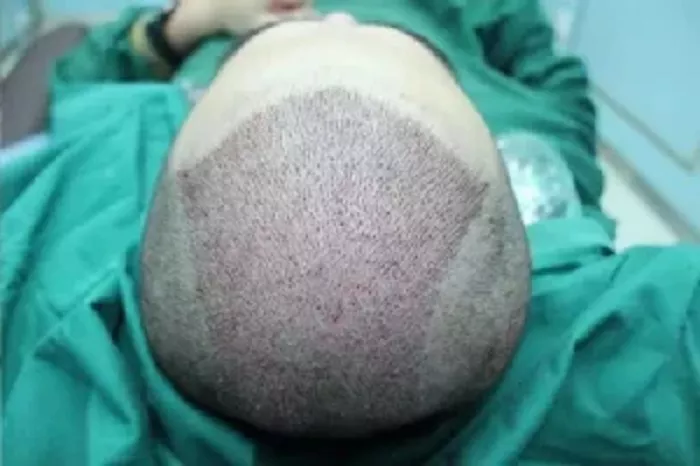Undergoing a hair transplant is a significant decision, and understanding the recovery process is crucial for optimal results. One of the most common concerns patients have is about scabs formation and how long they last. Scabs are a natural part of healing, but knowing what to expect can help ease anxiety and ensure proper aftercare.In this comprehensive guide, we’ll break down everything you need to know about scabs after a hair transplant—why they form, how long they stay, and the best ways to care for your scalp during this phase.
What Causes Scabs After a Hair Transplant?
Scabs develop as part of the body’s natural healing process. During a hair transplant, tiny incisions are made in the scalp to implant hair grafts. These small wounds trigger the body’s defense mechanism, leading to:
- Blood clotting to prevent excessive bleeding.
- Formation of a protective layer (scab) over the grafts to shield them from bacteria.
- Gradual tissue repair beneath the scab as new skin cells form.
Scabs are a positive sign that your scalp is healing, but they must be managed carefully to avoid damaging the newly transplanted hair follicles.
How Long Do Scabs Typically Last?
The duration of scabs varies from patient to patient, but most people experience the following timeline:
First 3-5 Days
- Small crusts begin forming around the grafts immediately after surgery.
- The scalp may feel tight, itchy, or slightly tender.
Days 5-10
- By the fifth day, scabs start drying out and hardening.
- Gentle washing (as instructed by your surgeon) helps soften and remove them gradually.
Days 10-14
- With proper care, the majority of scabs will flake off within two weeks.
- Some stubborn scabs may remain but will disappear soon after.
By the end of the second week, most patients no longer have visible scabs. However, the healing process beneath the skin continues for several months.
How to Care for Scabs After a Hair Transplant
Proper aftercare is essential to ensure scabs heal correctly without harming the grafts. Follow these steps:
Follow Your Surgeon’s Washing Instructions
- Use a mild, sulfate-free shampoo as recommended.
- Gently apply water and shampoo without rubbing or scratching.
- Let the scabs soften before rinsing—avoid picking them.
Keep the Scalp Moisturized
- Apply any prescribed saline spray or moisturizing solution to prevent excessive dryness.
- Avoid heavy creams that may clog pores.
Avoid Scratching or Picking Scabs
- Scratching can dislodge grafts and lead to poor growth.
- If itching is severe, consult your doctor for a safe remedy.
Sleep in an Elevated Position
- Keeping your head elevated reduces swelling and prevents accidental scab removal.
Avoid Sun Exposure and Sweating
- Direct sunlight can irritate healing skin.
- Excessive sweating (from exercise) should be avoided for at least two weeks.
What Happens If Scabs Are Removed Too Early?
Removing scabs prematurely can have negative consequences, including:
- Dislodging grafts, leading to poor hair growth.
- Increased risk of infection if the wound is exposed.
- Prolonged healing time due to repeated irritation.
Patience is key—never force scabs off. They will fall off naturally when the underlying skin has healed sufficiently.
When Should You Be Concerned About Scabs?
While scabbing is normal, certain signs may indicate a problem:
- Excessive redness, swelling, or pus (possible infection).
- Bleeding that doesn’t stop after light pressure.
- Scabs remaining beyond three weeks without loosening.
If you notice any of these symptoms, contact your hair transplant specialist immediately.
The Healing Process Beyond Scabs
Even after scabs fall off, the scalp continues to heal:
- First Month: Tiny hairs may shed—this is normal (shock loss).
- Months 2-3: New hair begins growing slowly.
- Months 6-12: Full results become visible as hair thickens.
Scabs are just the first step in a long but rewarding journey toward fuller hair.
Additional Tips for a Smooth Recovery
To further enhance your healing process and minimize discomfort, consider these extra care tips:
- Stay Hydrated: Drinking plenty of water helps maintain scalp moisture and promotes faster healing.
- Avoid Smoking and Alcohol: These can slow down recovery by reducing blood flow to the scalp.
- Wear Loose Hats (If Needed): If you must cover your scalp, choose a breathable, loose-fitting hat to avoid friction.
- Use a Soft Pillowcase: Silk or satin pillowcases reduce irritation compared to rough fabrics like cotton.
- Follow a Nutrient-Rich Diet: Foods high in vitamins A, C, and E, as well as protein, support tissue repair and hair growth.
By incorporating these habits, you can speed up scab removal and ensure a healthier scalp environment for your new hair to thrive.Would you like personalized advice for your hair transplant journey? Consult your specialist for the best care plan tailored to your needs!
Conclusion
Scabs after a hair transplant are a temporary yet essential part of recovery. They usually last 7-14 days, depending on aftercare. By following your surgeon’s instructions and resisting the urge to pick at them, you’ll ensure the best possible outcome.Remember: Proper healing today means better hair tomorrow. Stay patient, follow aftercare guidelines, and soon enough, your scalp will be smooth, healthy, and ready for new hair growth.Would you like additional tips on post-transplant care? Let us know in the comments!
Related Topics

